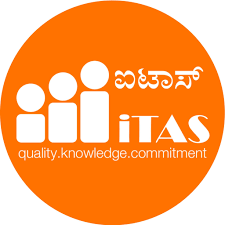MICROSOFT SQL SERVER 2017 free videos and free material uploaded by iTAS Training Institute staff .
Introduction
What is SQL?
SQL Process
SQL Commands
RDBMS Concepts
Data, Database, Field, Record
What is RDBMS?
SQL Constraints
Data Integrity
Advantages of DBMS
Limitations of File Management System
Understanding Client and Server
E-R Modeling and Diagram
Analyzing the Requirement
Identify Entities and their Relationships
E-R Diagram Symbols
Drawing E-R Diagram
E-R Diagram uses
Conversion of E-R Diagrams into Tables
Normalization
Database Normalization
First Normal Form (1NF)
Second Normal Form (2NF)
Third Normal Form (3NF)
RDBMS Databases
MySQL
MS SQL Server
Oracle
MS Access
SQL Syntax
Various
Syntax in SQL
Data Types
haracter and String Data Types
Numeric Data Types
Date and Time Data Types
Unicode Character String Data Types
Binary Data Types
Miscellaneous Data Types
Operators
What is an Operator in SQL?
Arithmetic Operators
Comparison Operators
Logical Operators
Expressions
Boolean Expressions
Numeric Expressions
Date Expressions
Constraints
NOT NULL Constraint
DEFAULT Constraint
UNIQUE Constraint
Primary Key
Foreign Key
CHECK Constraint
INDEX Constraint
Dropping Constraints
Integrity Constraints
SQL Queries
CREATE Database
DROP or DELETE Database
SELECT Database, USE Statement
CREATE Table
Creating a Table from an Existing Table
DROP or DELETE Table
INSERT Query
SELECT Query
WHERE Clause
AND & OR Conjunctive Operators
The AND Operator
The OR Operator
UPDATE Query
DELETE Query
LIKE Clause
TOP, LIMIT or ROWNUM Clause
ORDER BY Clause
Group By
Distinct Keyword
SORTING Results
Handling Duplicates
Using Joins
INNER JOIN
LEFT JOIN
RIGHT JOIN
FULL JOIN
SELF JOIN
CARTESIAN or CROSS JOIN
Unions Clause
he UNION ALL Clause
INTERSECT Clause
EXCEPT Clause
NULL Values
Alias Syntax
Indexes
The CREATE INDEX Command
The DROP INDEX Command
INDEX Constraint
ALTER TABLE Command
TRUNCATE TABLE Command
Implementing Views
What are Views?
Advantages of Views
Creating, Altering, Dropping Views
Advance Options while Creating a View
SQL Server Catalogue Views
The WITH CHECK OPTION
Having Clause
Transact-SQL (T-SQL)
Properties of Transactions
Transactional Control Commands
Wildcard Operators
Date Functions
Temporary Tables
What are Temporary Tables?
Dropping Temporary Tables
Clone Tables
Sub Queries
Subqueries with the SELECT Statement
Subqueries with the INSERT Statement
Subqueries with the UPDATE Statement
Subqueries with the DELETE Statement
Working with Stored Procedures
and Functions
hat are Stored Procedures?
Benefits of Stored Procedures
Creating, Executing Modifying, Dropping
Input, Output and Optional Parameters
System Defined Stored Procedures and Functions
User Defined Functions
Implementing Triggers
What are Triggers?
Constraints vs Triggers
Creating, Altering, Dropping Triggers
After and Instead of triggers
Using Rollback Transaction
Working with Cursors
Creating Cursors
Cursors vs. Select
Types of Cursors
Locks on Cursors
Advantages of Cursors
Using Sequences
Using AUTO_INCREMENT Column
Obtain AUTO_INCREMENT Values
Renumbering an Existing Sequence
Starting a Sequence at a Particular Value
Backup and Restore
Generating SQL Script
Executing SQL Script
Generating Change Script
Taking database Backup
Restoring database using Backup
Attaching and Detaching of Database
This course is designed to help you understand Basic and Advanced concepts of SQL and SQL Server concepts. The course is designed for beginners and professionals.
Microsoft SQL Server is a relational database management system developed by Microsoft. It is also called as MS SQL Server. Its primary function is to storing and retrieving data as requested by other software applications—which may run either on the same computer or on another computer across a network (including the Internet).

- 0 Reviews
- 0 Students
- 11 Courses

Write a public review